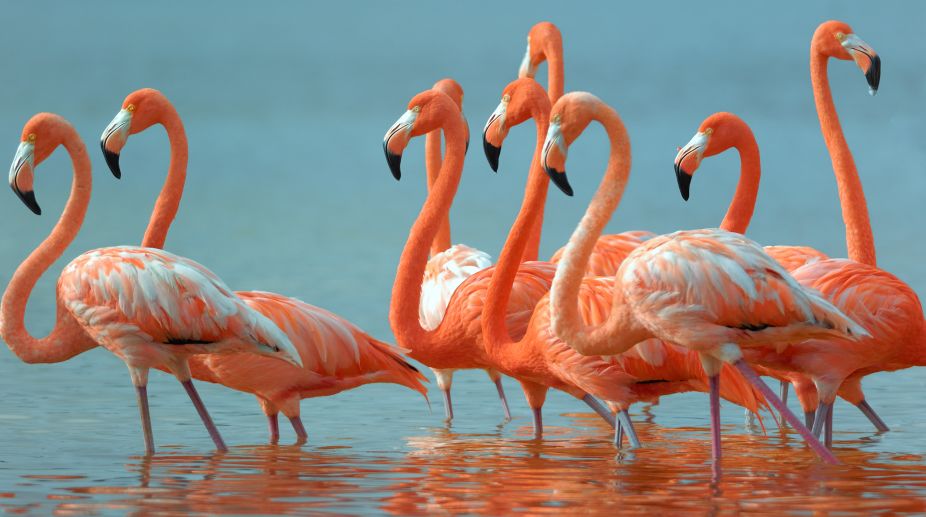It is easier for flamingos to stand on one leg than on two, as this signature pose helps them save energy, say scientists who have solved longstanding puzzle of why these birds perch on a single limb.
Researchers showed that flamingos employ no active muscular effort when they are on one leg. A passive mechanism is engaged in the one-legged position, allowing flamingos to stand even while taking a nap.
Advertisement
Previously, it was thought that the one-legged position might help reduce muscle fatigue, as the birds alternated from standing on one leg to the other.
Other researchers have proposed that this behaviour helps regulate body temperature.
Scientists from the Georgia Institute of Technology (Georgia Tech) and Emory University in the US have uncovered the mechanical secrets behind this impressive trick.
The researchers conducted several experiments with both live and dead birds. They found that dead flamingos could be made to stand one-legged without any external support.
"If you look at the bird from the front, while they're standing on one leg, the foot is directly beneath the body which means that their leg is angled inward," Young-Hui Chang from Georgia Tech told 'BBC News'.
"That's the pose you have to strike in order to engage the stay mechanism," said Chang.
Dead birds cannot stand unsupported on two legs, suggesting a greater role for active muscle force in this posture, scientists said.
The researchers also studied live birds, and showed that when they were standing one-legged and resting, they hardly moved at all – underlining the stability of this passive position.
However, the birds did sway somewhat when the one-legged posture was combined with an activity, such as grooming or calling out.











